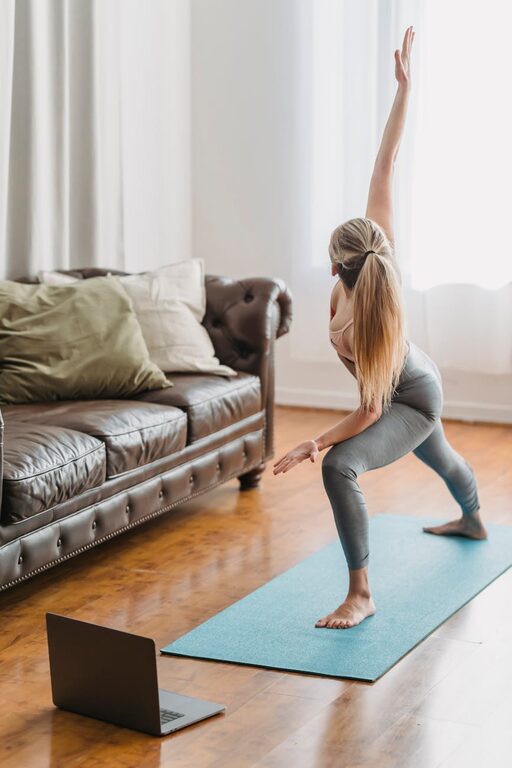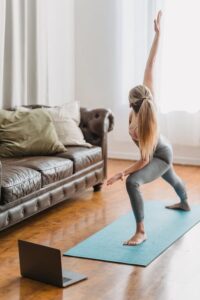A Beginner’s Guide to Stretching at Home for Everyone

Stretching is a fundamental part of maintaining a healthy body, yet many people overlook it in their daily routine. Whether you’re looking to improve your flexibility, reduce muscle tension, or simply feel more comfortable in your body, stretching at home is an easy and accessible way to start. This beginner’s guide will walk you through everything you need to know to incorporate stretching into your daily life.
Why Stretching Matters
Stretching offers numerous benefits beyond just feeling more limber. It can help:
– Increase blood flow to muscles
– Improve posture
– Enhance flexibility and range of motion
– Reduce risk of injury
– Relieve stress and muscle tension
– Support overall physical performance
Starting with simple stretches at home can make a big difference in how your body feels throughout the day.
Getting Ready: What You Need
You don’t need fancy equipment to start stretching. Here’s what’s helpful to have:
– A comfortable, flat surface such as a yoga mat or carpet
– Loose, comfortable clothing that allows movement
– A quiet space with enough room to stretch your limbs fully
– Optionally, a towel or strap to assist with certain stretches
Remember to choose a time when your body is warm, such as after light physical activity or taking a shower. Stretching cold muscles can lead to injury.
Basic Stretching Guidelines for Beginners
It’s important to stretch safely and effectively. Follow these tips:
– Warm up first: Do 3-5 minutes of light cardio (walking in place, arm circles) before stretching.
– Move slowly: Ease into each stretch gradually without bouncing or jerking.
– Hold stretches: Aim for 15-30 seconds per stretch to give muscles time to relax.
– Breathe deeply: Maintain steady breathing to help your body relax.
– Avoid pain: Stretch to the point of mild tension, not pain.
– Be consistent: Stretch daily or at least 3-4 times a week for best results.
Beginner-Friendly Stretching Routine
Here’s a simple routine covering major muscle groups. Perform each stretch on both sides of the body when applicable.
1. Neck Stretch
– Sit or stand tall.
– Tilt your head gently toward your right shoulder until you feel a stretch on the left side of your neck.
– Hold, then switch to the other side.
2. Shoulder Rolls
– Stand tall, lift your shoulders toward your ears.
– Roll them back and down in a circular motion.
– Repeat 10 times to release tension.
3. Chest Opener
– Clasp your hands behind your back.
– Straighten your arms and gently lift your chest.
– Hold, feeling the stretch across your chest and shoulders.
4. Seated Forward Bend
– Sit with your legs straight out in front.
– Hinge at the hips and reach toward your toes.
– Keep your back long, and don’t force the stretch.
5. Cat-Cow Stretch (for back flexibility)
– Get on hands and knees.
– Arch your back up like a cat, tucking your chin.
– Then dip your back down while lifting your head and tailbone.
– Repeat slowly for 5-8 rounds.
6. Hip Flexor Stretch
– Kneel on your right knee with your left foot flat in front.
– Push hips forward gently to stretch the front of your right hip.
– Hold, then switch sides.
7. Hamstring Stretch
– Lie on your back.
– Extend your right leg straight up, holding behind your thigh or calf.
– Keep the other leg bent or straight on the floor.
– Switch after holding.
8. Ankle Circles
– Sit or lie down.
– Lift one foot and slowly rotate your ankle clockwise 10 times.
– Then reverse the direction.
– Switch sides.
Tips for Staying Motivated
Maintaining a stretching routine can be easier with these ideas:
– Set a specific time daily, such as morning or before bed.
– Use an app or video to guide your stretches.
– Keep a stretching journal to track progress.
– Combine stretching with other activities like yoga or walking.
– Invite a friend or family member to join you for accountability.
When to Consult a Professional
If you have existing injuries, chronic pain, or medical conditions, consult a healthcare professional before beginning any new exercise or stretching routine. A physical therapist or certified trainer can recommend stretches tailored to your needs.
Final Thoughts
Starting a stretching habit at home is simple, requires no special skills or equipment, and offers lasting benefits for your body and mind. By following this beginner’s guide, you can enjoy improved flexibility, reduced muscle tightness, and a greater sense of well-being. Remember to be gentle with yourself and listen to your body—consistency is key!
Why not start stretching today? Your body will thank you!




